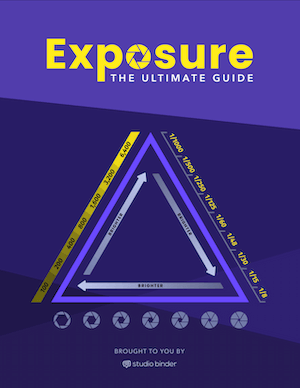ISO is an essential part of photography – but it can be tricky to understand how it differs from the other pillars of the exposure triangle: aperture and shutter speed. If you’re confused, you’ve come to the right place. We’re going to explain what ISO means by defining the term, as well as by looking at some common ISO values and examples. By the end, you’ll have a complete beginner’s guide to ISO.
ISO Meaning
Getting to know ISO
ISO stands for the International Organization of Standardization.
This organization is the main governing body that standardizes sensitivity ratings for camera sensors. But that's just trivia — it’s better that we know what ISO is and how it works when we snap a photo, or shoot a video.
ISO PHOTOGRAPHY DEFINITION
What is ISO?
ISO is the sensitivity of a camera sensor – or piece of film – to light. The lower the ISO, the less sensitive it is to light. Conversely, the higher the ISO, the more sensitive it is to light. Higher ISOs commonly result in visual artifacts known as “grain” or “noise” because they are used to artificially brighten the image due to lack of light. This is known as a poor signal to noise ratio.
Common ISO Values:
- ISO 100
- ISO 200
- ISO 400
- ISO 800
- ISO 1600
- ISO 3200
- ISO 6400
What is ISO Setting in Camera?
Common ISO Values
Physical film stocks have different “speeds,” aka sensitivities to light. These “speeds” have been measured by different values over time; historically, ASA and DIN were popular standards, but in 1974 the two were combined under the International Organization for Standardization, aka ISO.
Today, ISO has been standardized in both film photography and digital photography. However, film ISO is locked in upon exposure, whereas digital ISO can be changed at any time.
ISO is typically set by preset values, which increase by twofold the higher they go. For example: ISO 100 is doubled by ISO 200, ISO 200 is doubled by ISO 400 so on and so forth.
It’s important to note that these values only refer to the film/sensor’s sensitivity to light.
There are still lots of other factors that contribute to a photograph’s look, including the aperture, shutter speed, and lighting conditions. Not to mention the camera, sensor, or type of film stock.
In most cases, the lower the ISO, the sharper the image. The higher the ISO, the more grain or noise there will be.
If you’re wondering “when should I bump up ISO?” check to see if your image is sufficiently bright. If it’s too dark, bump up the ISO. Just don’t bump it up too much if you don’t want grain or noise.

How to Know What ISO Based on Lighting • ISO 100-12800 Examples
ISO 100
Generally, the lowest preset ISO is 100; however, some cameras allow you to shoot lower. For example: many Nikon cameras have a base ISO of 64. This range is the baseline for most cameras; designed to shoot the sharpest image possible.
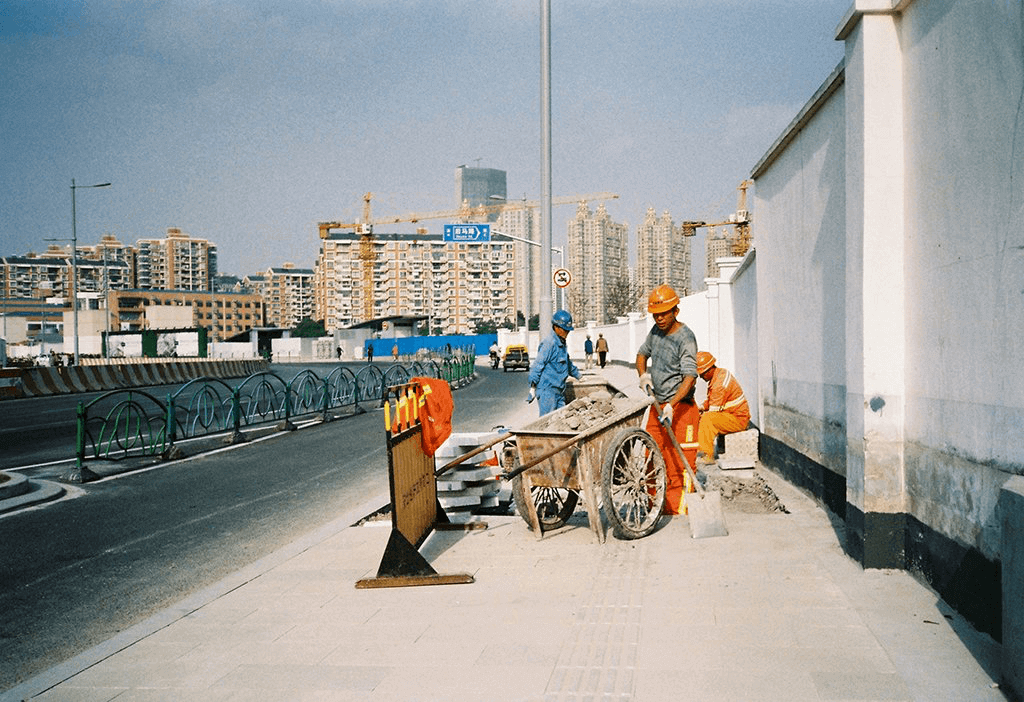
ISO Meaning Camera • Image Shot on Kodak Pro Image 100 in a Canon Sure Shot AF-7 by Lee Webb, via My Favourite Lens
ISO 100 is best used in good lighting conditions, either outside on a sunny day or inside with flash.
ISO 200
Some older cameras use ISO 200 as a low-end baseline. Similar to ISO 100, ISO 200 is best used in static, good lighting conditions.
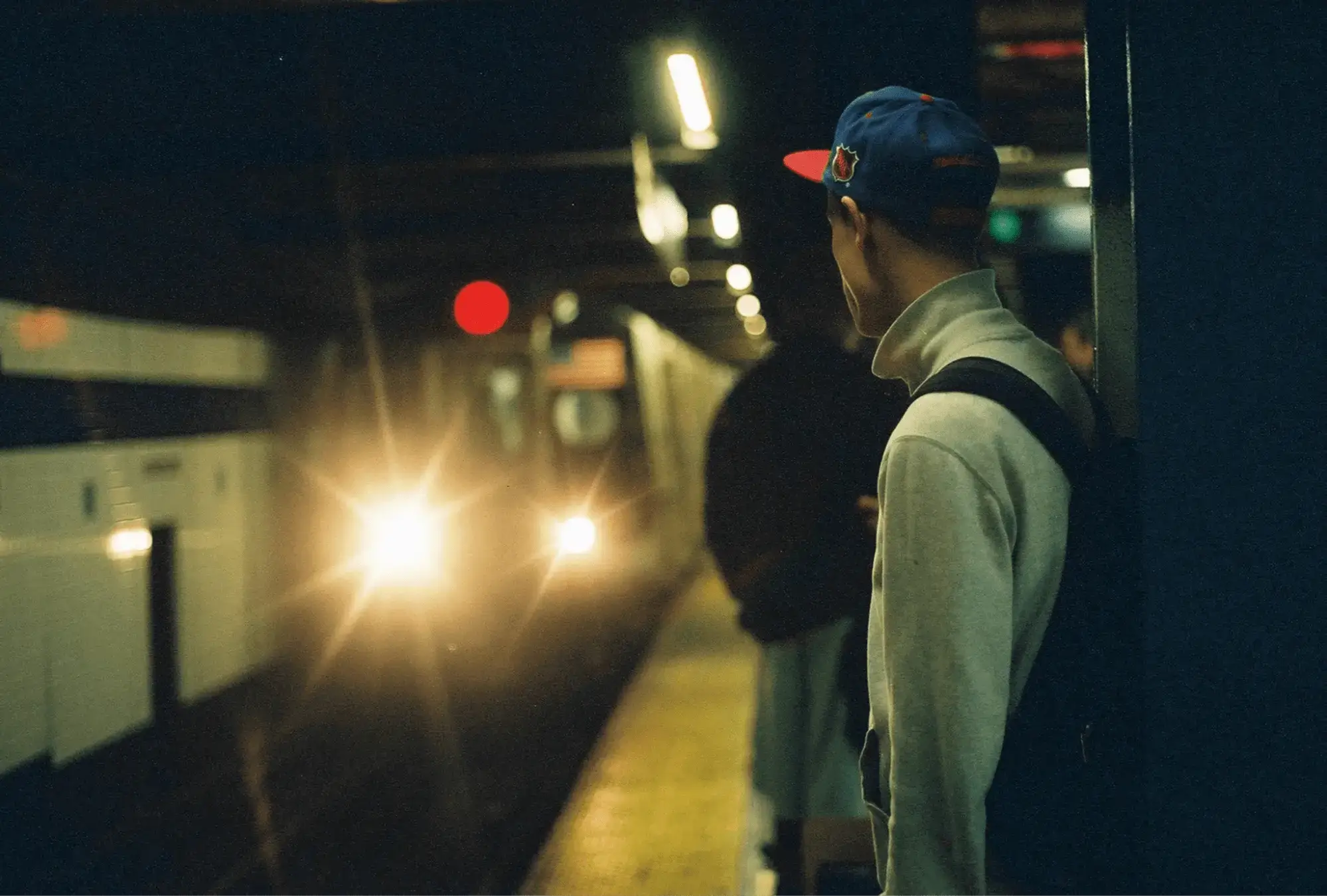
What is ISO Photography? • Image Shot on Pentax K1000 on Kodak Gold 200 (35mm) by fivedayforecast, via Lomography
If you’re shooting ISO 200, you’ll want to consider putting your camera on a tripod or stabilizer to reduce artifacting due to motion.
ISO 400/800
ISO 400/800 is a good middle ground between bright and low light environments.
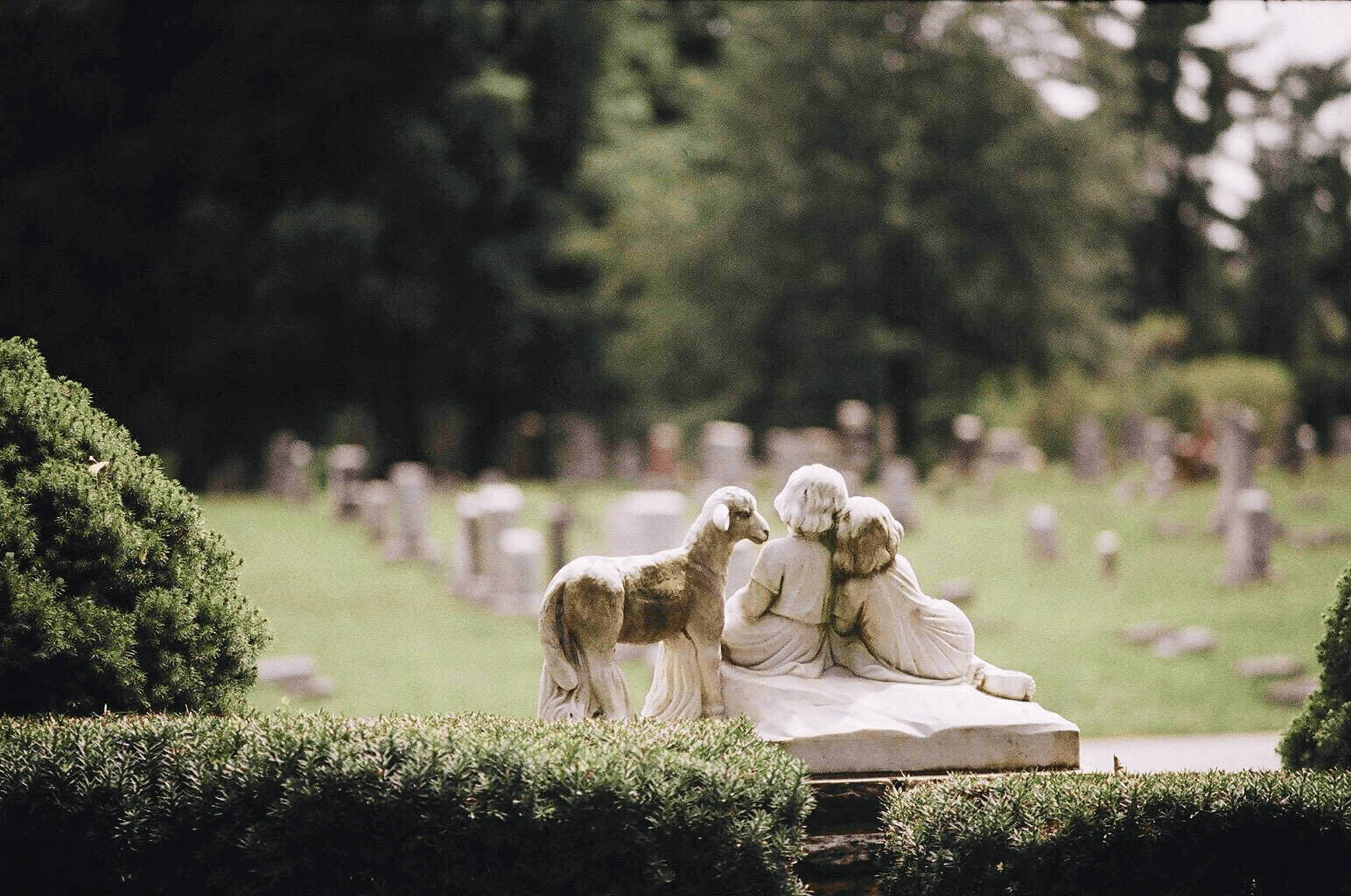
What is ISO Photography? • “Maplewood Cemetery” Image Shot on Praktica BX20 Kodak ISO 400 by y1lee, via Lomography
This range is most suitable for natural light on cloudy days or moderately well-lit interiors. Of course, the less light you have, the higher the ISO should be. But the 400-800 shouldn’t appear too grainy as long as there’s a decent amount of light.
ISO 1600/ISO 3200/ISO 6400
ISO 1600+ is typically regarded as “high ISO” and most commonly used in lowlight conditions or handheld photography. The higher the ISO, the more likely your photograph is to have “noise” as the sensor artificially brightens the image due to lack of “good light.”
Did You Know?
If your subject is moving and you’re trying to freeze the motion, a higher ISO will allow for that fast shutter speed you need.
In super dark conditions, you’ll need to boost the ISO significantly. The image below shows the difference between a Sony A7 shooting at ISO 1600 compared to ISO 409600!
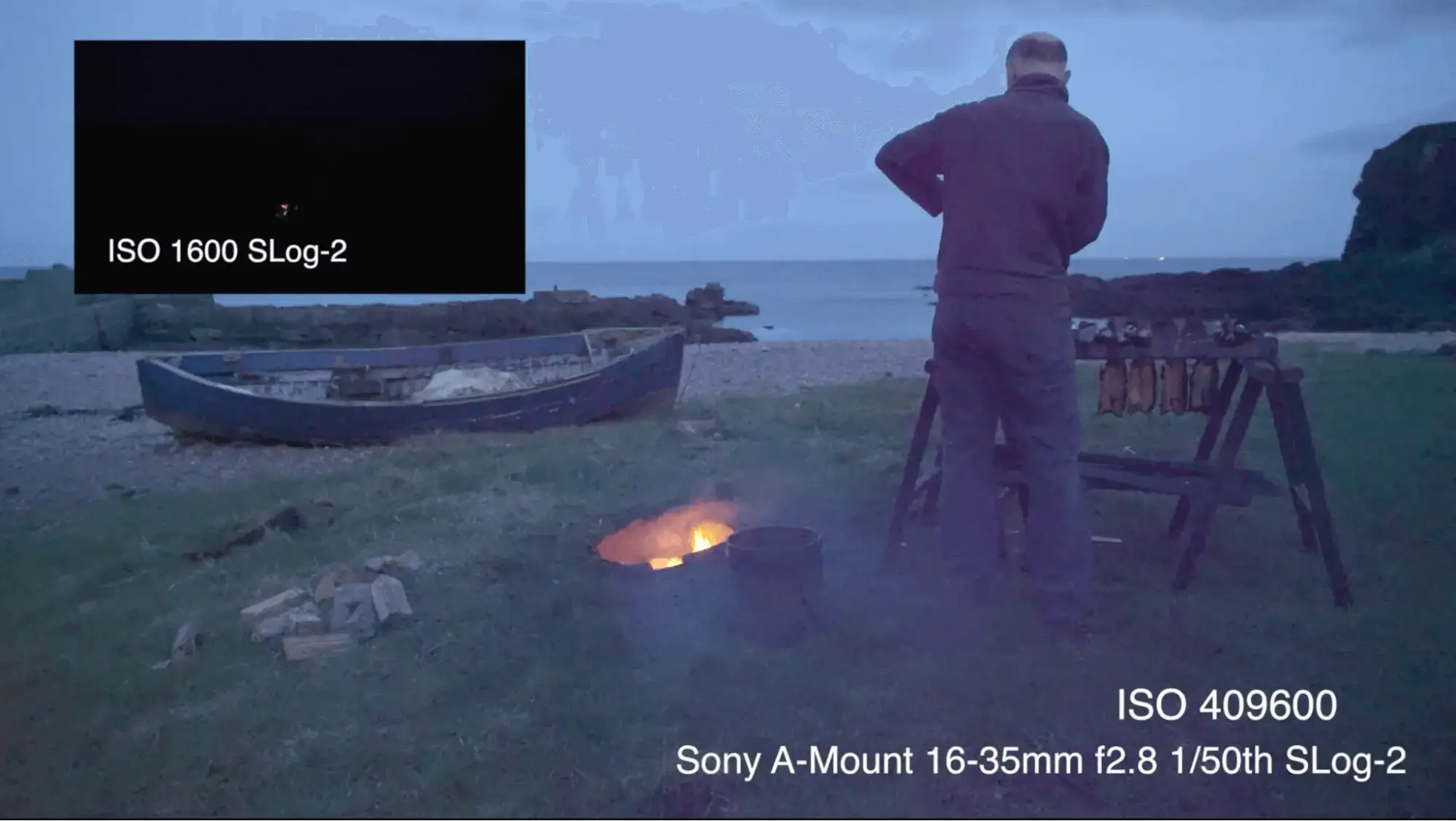
What is ISO Photography? • Image Shot on Sony A7 Low Light Demonstration
High ISO is often used in sports photography and wildlife photography to sharply capture low light objects in motion.
However, the times are changing. New developments in camera technology are helping to reduce artifacts in bad light/high ISO photography. We’ve seen great developments in recent history; in the near-future, it’s possible these artifacts will be largely eliminated.
Of course, you can always “denoise” photographs in digital programs like StudioBinder’s image editor.
Related Posts
The Exposure Triangle Explained
ISO vs. Shutter Speed vs. Aperture
ISO, shutter speed, and aperture comprise the exposure triangle: which dictates how a camera captures light.
ISO
ISO is the sensitivity of a camera sensor – or the film itself – to light. The lower the ISO, the less sensitive. The higher the ISO, the more sensitive.
Shutter Speed
Shutter speed is the length of time a camera’s sensor is open and exposed to light. If shutter speed is too long (lets in too much light), it will overexpose the image. If shutter speed is too short (lets in too little light), it will underexpose the image.
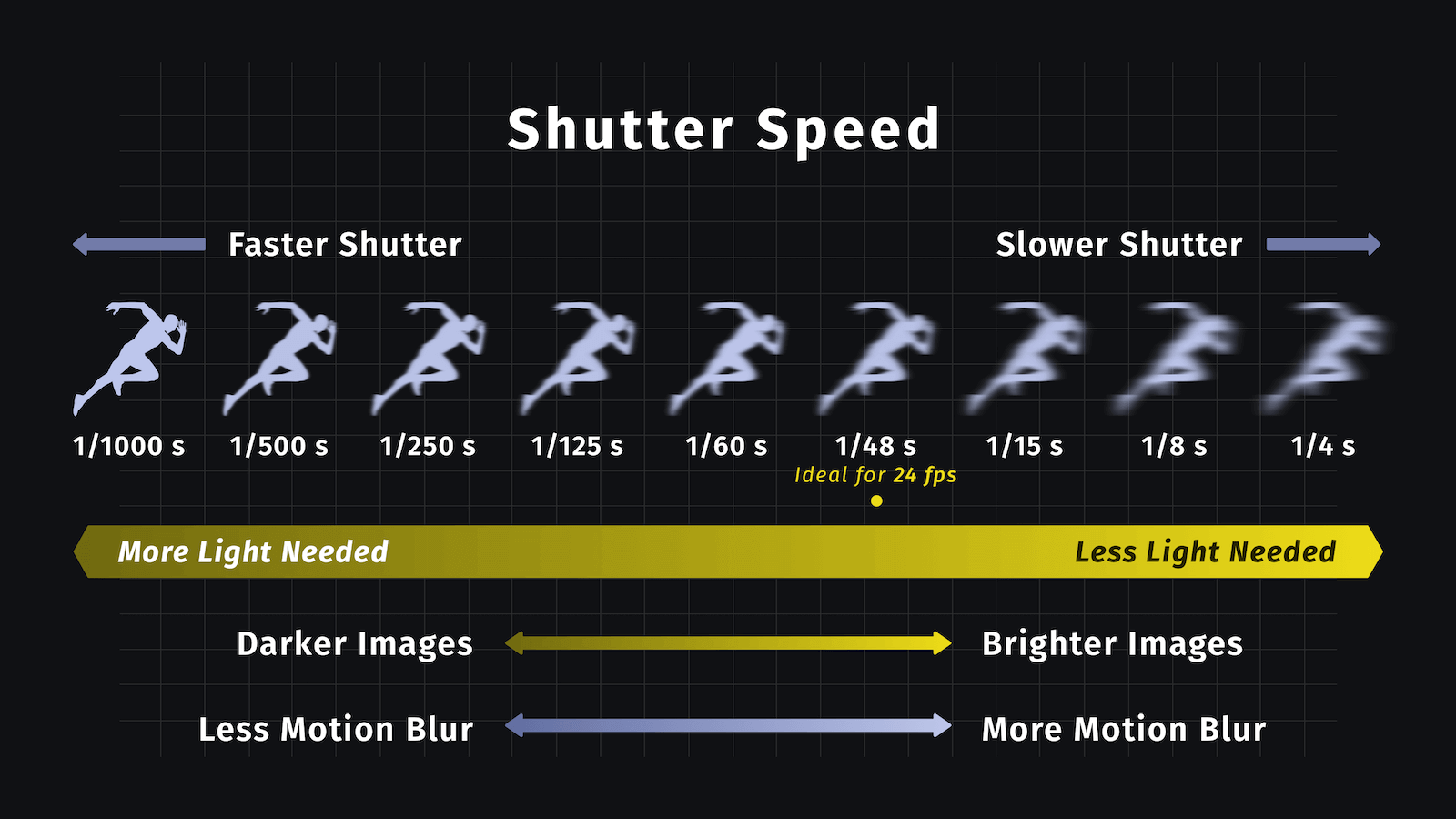
High ISO and High Shutter Speeds Help Capture Action in Low Light
Shutter speeds are measured in fractions of a second, e.g. 1/30, 1/125, 1/500. The smaller the number, the faster the shutter speed.
Aperture
Aperture is the opening of a camera lens through which light passes. A large aperture lets more light in and a small aperture less light in.
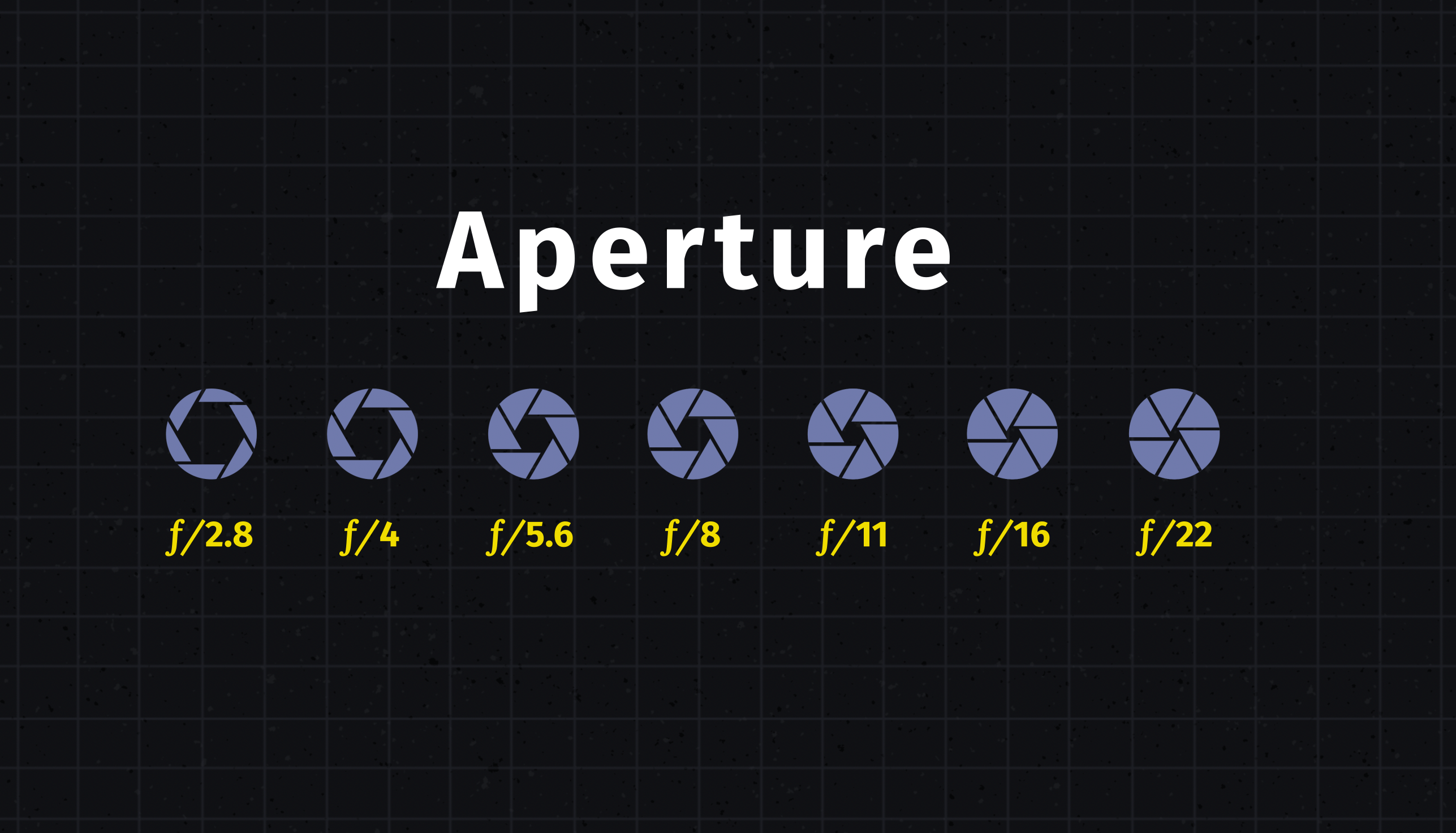
High Aperture and Low ISO Counteract Amount of Light with Level of Sensitivity
Aperture is typically set to a specific size (amount of opening), which is known as an f/stop. The larger the number, the smaller the opening.
Photographers may set their ISO before or after setting their aperture and shutter speed.
When the elements of the exposure triangle are aligned, photographers are able to capture clear photographs. However, some artists opt for less “perfect” frames, and purposely play with ISO, aperture, and shutter speed to achieve unique looks. A grainy picture is no less valid than a sharp one with little to no artifacting.
Free downloadable bonus
FREE Download
Ultimate Guide to Exposure
The Exposure Triangle is something every photographer and cinematographer needs to master. Download our FREE e-book to get in-depth explanations and tutorials on topics like aperture, ISO, shutter speed, and how to balance these settings to nail perfect exposure every time.
What is ISO Photography Used For?
Gameplan your ISO with a shot list
If you’re planning a shoot but don’t know what ISO to use, consider making a shot list. This will help you plan for different lighting conditions and find the perfect sensitivity.
What is ISO? Photography • StudioBinder Shot List Template
StudioBinder’s shot list software allows you to import images alongside descriptions, shot sizes, and shot types. You can note ISO ranges in the description, then upload images to compare and contrast different looks.
Up Next
What is Depth of Field?
Depth of field refers to the art of focus in photography – but what is it? And how can your knowledge of ISO and the exposure triangle help you master it? Follow along as we break down depth of field, with camera-subject distance and focal length examples. By the end, you’ll know what depth of field means and how to use it.
Up Next: Examples of Shallow vs Deep Depth of Field →
Showcase your vision with elegant shot lists and storyboards.
Create robust and customizable shot lists. Upload images to make storyboards and slideshows.

